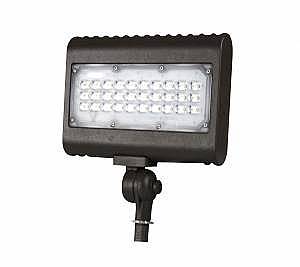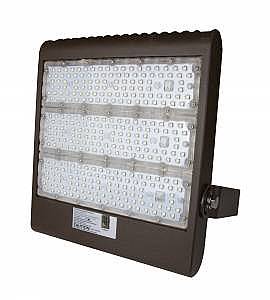Landscape Lighting Info
Landscape lighting is a universal and important feature across all types of industrial, commercial, municipal and even residential properties in practically every place in the world. Landscape designers use landscape lighting to highlight certain features of a property, normally for aesthetic or safety reasons, or both. These features are required to be illuminated regardless of ambient lighting conditions, which means high endurance and energy efficient light fixtures that produce a good quality of light are a must-have.
Historically speaking, landscape designers and property managers have used traditional lighting fixtures such as HIDs, fluorescents and sodium lamps for landscape lighting applications. At the time, these lights were the most efficient and longest lasting options available. However, times have changed and LED lighting technology has come to dominate the market due to its significant performance and efficiency advantages.
Landscape Lighting Products

Uses: The Broadcast FLF Series Floodlights are a great option for illuminating specific areas around buildings. These lights range from 1,663 lumens up to 10,342 lumens making them an ideal choice to illuminate smaller areas that don’t require lighting that’s ultra bright or wide.
- Wattage: 15W / 30W / 50W / 80W
- Lumens: 1,660 / 3,720 / 6,180 / 10,340
- Kelvin: 4000K / 5000K
- Full Spec Sheet

Uses: FLL Flood Lights range from 13,500 lumens up to 40,718 lumens which provide ideal illumination for airport parking lots, roadways and other areas around the complex.
- Wattage: 100W / 150W / 230W / 300W
- Lumens: 13,500 / 20,250 / 20,680 / 31,050 / 31,312 / 40,500
- Kelvin: 5000K
- Full Spec Sheet
Why LED Lighting?
There are numerous advantages to using LED technology for landscape lighting needs. These include reduced energy consumption, lower maintenance costs and a higher quality of light when compared to traditional lighting fixtures. These advantages are quite impactful throughout the lifespan of the LED fixture, and help to save municipal users and businesses significant amounts of time and money. Considering all these benefits, LED lighting is the only logical choice in today’s lighting marketplace.
One of the most well known benefits of LED lighting is its dramatically improved energy efficiency compared to traditional lighting methods. In many cases, these fixtures reduce energy consumption by as much as 60%. This massive cost savings can be enough to pay for the fixtures many times over, something that cannot be said for most HIDs and sodium lamps. This is especially important for municipal users, as budgets and operating expenditures are being routinely cut wherever possible.
Another benefit of LED lighting is its reduced maintenance costs. In fact, most fixtures do not require any maintenance whatsoever, due to their lifetime sealed nature. This not only saves in regular parts replacement costs, but also in labor hours required. Many understaffed operations will appreciate these maintenance improvements, especially those operating on a large scale such as a university or sprawling corporate campus.
An often overlooked but equally important benefit of using LED lighting technology is the improved quality of light produced. This is measured using the Color Rendering Index (CRI), which is a scale that quantifies the accuracy of a light source, using natural light as a reference with a perfect CRI of 100. This higher accuracy of light not only makes landscapes look more pleasing to the eye, it also helps in improving visibility which can reduce accidents.
Tree Lighting
While LEDs are an excellent choice for general landscape lighting duties, they are especially well suited for tree lighting. Many landscape designs have trees as prominent features that need to be illuminated in order for the overall landscape design to work. These trees can be considerable in size, which require the use of very powerful lighting fixtures in order to properly illuminate them.
Due to the exceptionally good lumen output of LED lights, they are the best choice for this application. LED fixtures are more compact in size for their lumen output and less physically intrusive when compared to traditional lighting, which means they can be more seamlessly integrated into the overall landscape design. In situations where size is not a concern, higher powered LED fixtures can provide illumination capabilities that were previously impossible using traditional lighting technologies.
Landscaping Lighting – Popular Choices
The type of fixtures used for landscape lighting vary depending on the particular area or subject to be illuminated. One of the most popular options are flood lights, which provide exceptionally good lumen output that covers a wide area. They also come in a variety of sizes, wattages and mounting options to allow them to be used for everything from sign illumination to highlighting important landscape features.
Another popular choice for landscape lighting fixtures are corn lamps. These lamps provide 360° illumination in order to spread light over as wide of an area as possible. Many college and corporate campuses have post lamps for walkway lighting, and corn lamps are one of the top choices for upgrading the traditional bulbs that are normally used in these fixtures.

